Learn About Titan The Incredible Planet-like Moon
Saturn’s Giant
Discovered in 1655 by Christiaan Huygens, Titan is the 2nd largest moon in the solar system after Jupiter’s Ganymede! It is even larger than the Planet Mercury! Titan is also the only moon in the Solar System known to have a dense atmosphere (including clouds) and an Earth-like cycle of liquid running across its surface which pools in liquid hydrocarbon lakes! How cool!
Fast Summary Facts About Titan!
- Discovered: March 25th 1655, by Christiaan Huygens
- Name: From Greek mythology, also referred to the moon as Saturn VI
- Size: Diameter of 5,151 kilometres (3,201 miles)
- Moon Rank: 2nd Largest in the solar system
- Orbit: Prograde & Slightly Eccentric
- Orbit Radius: 1,220,000 km (758,500 miles)
- Orbital Period: 15 Days, 22 Hours
- Orbital Speed: 5.57 km/s
- Density: 1.88 g/cm3
- Surface Temperature: -179 °C (-290 °F or 94 K)
- Surface: Water-ice, Liquid Hydrocarbons
- Atmosphere: 98.4% Nitrogen & 1.4% Methane
Fun Facts About Saturn’s Largest Moon Titan!
- The name Titan comes from Greek mythology as the term for children of the sky god Uranus and Earth god Gaia. Astronomers also refer to the moon as Saturn VI; as it’s the 6th major moon from the Saturn.
- Saturn’s largest moon is nearly 50% bigger than Earth’s Moon, and is even 5% wider than the Planet Mercury! If Titan orbited the Sun directly we’d call it a planet!
- Like all but two of Saturn’s ‘large’ moons, Titan is ‘tidally locked’ to Saturn as it orbits; meaning the same face of Titan always faces Saturn. This is the same as Earth’s Moon!
- The small nearby irregular moon Hyperion, is locked in a 3:4 orbital resonance with Titan, which keeps Hyperion tumbling chaotically.
- Titan’s density is 1.88 times that of liquid water which suggests Titan is composed of about half water-ice and half rocky material!
- Titan is the only moon in the Solar System known to have a dense atmosphere, it’s about 4 times denser than Earth’s atmosphere (it is also Nitrogen-rich like Earth’s atmosphere). It even has clouds of super cold hydrocarbons! So cool!
- Due to Titan’s lower gravity, the atmosphere extends 10 times further out into space than Earth’s; as high as 600 km!
- Complex organic molecules in the upper atmosphere create an orange opaque haze/smog which obscures the view of the surface from space. It wasn’t until the Cassini spacecraft arrived, with its radar instruments, that the surface was revealed.
- Cassini revealed a complex young surface with few craters, vast dunes of plastic sand blown by winds, possible cryovolcanoes and river channels cut by liquid ethane/methane rain which leads to lakes and seas of hydrocarbons near the poles.
- The sea called Kraken Mare, at 400,000 km² is the largest known body of liquid on Titan located in the northern polar region. At temperatures of less than -179 °C, it is likely a sea of hydrocarbons which is larger than Earth’s Caspian Sea!
- The Cassini spacecraft also released the Huygens lander probe which parachuted to the surface of Titan, becoming the first space probe to land in the outer Solar System and to land on a moon other than Earth’s Moon! You can learn about Huygens here (you can even watch a video of it descending to the surface)!
- Titan is believed to have a differentiated structure including a liquid ocean under its icy surface and above its large rocky core.
- Pioneer 11 was the first space probe to visit and explore Titan. Voyager 1 followed in 1980 with its trajectory specifically designed make a close flyby of the moon, to provide the first comprehensive data about Titan. The Cassini-Huygens mission, which arrived in 2004, dramatically increased our knowledge of this unique moon.
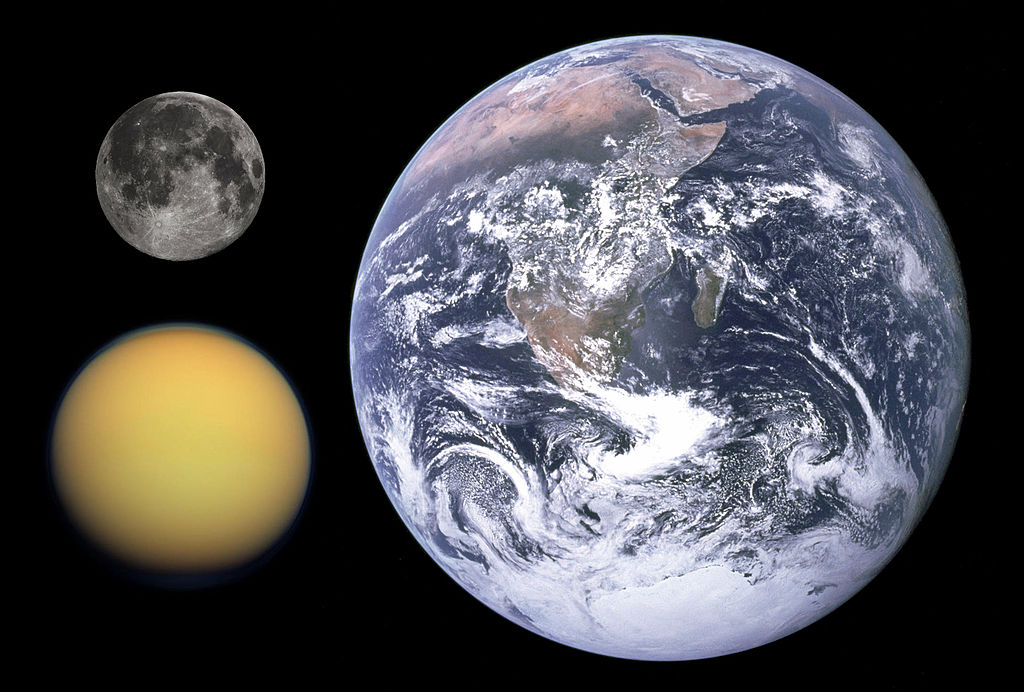
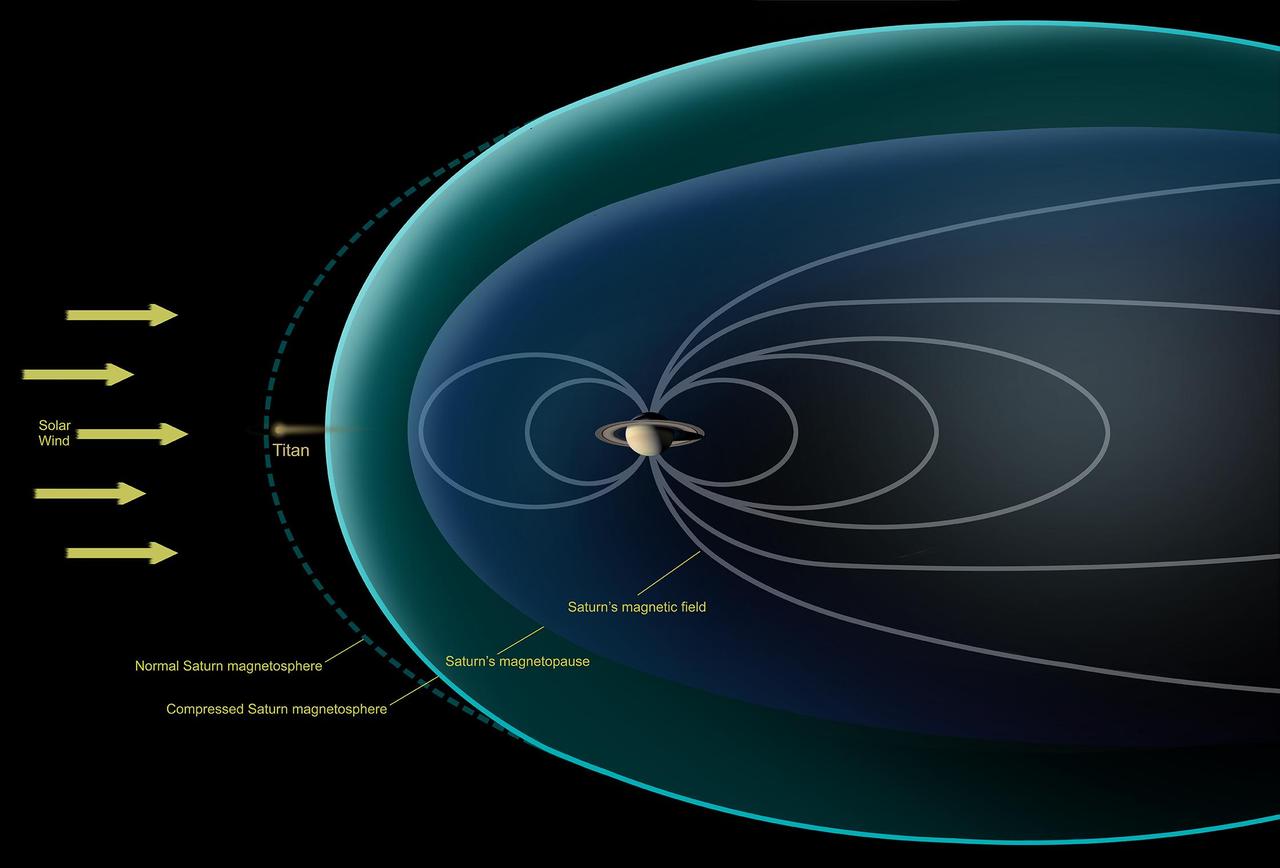
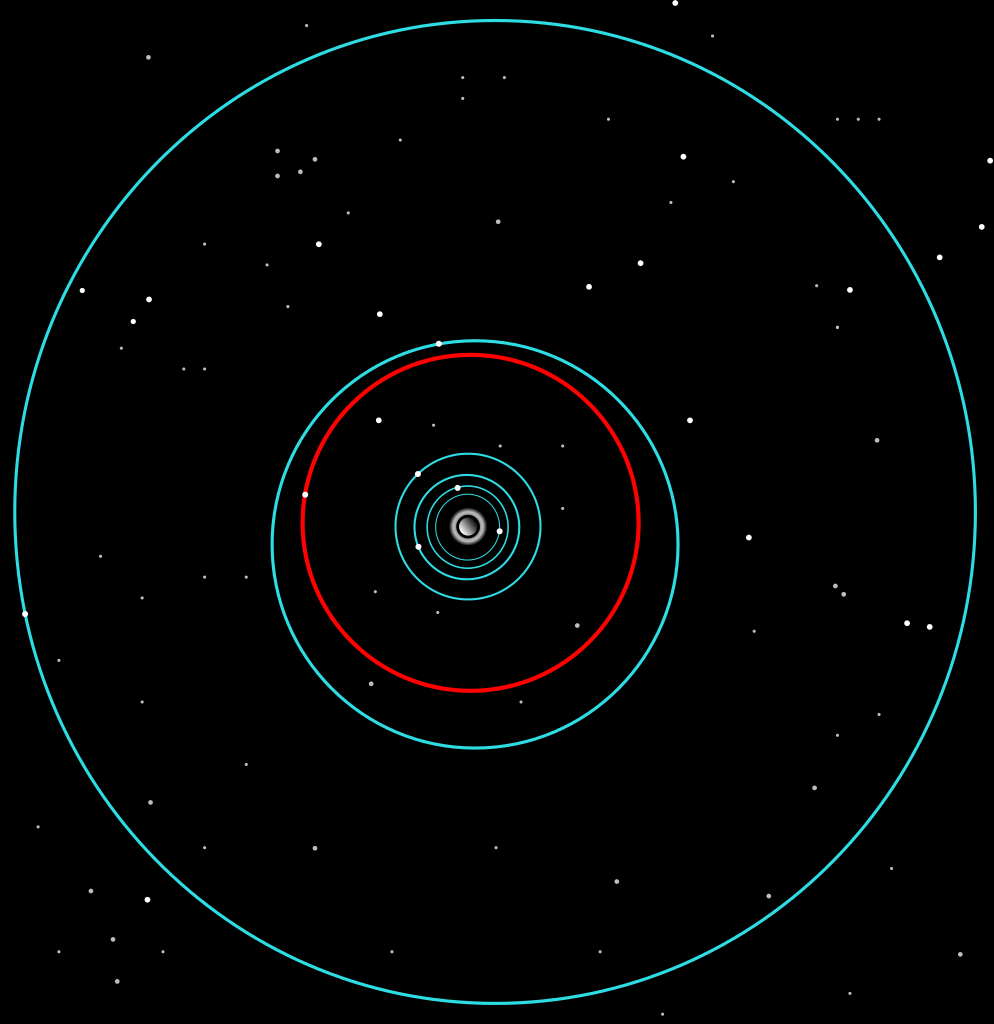
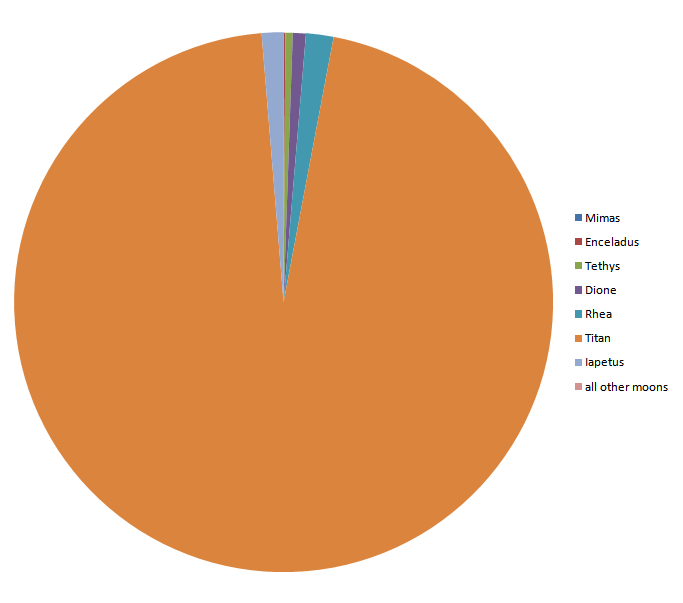
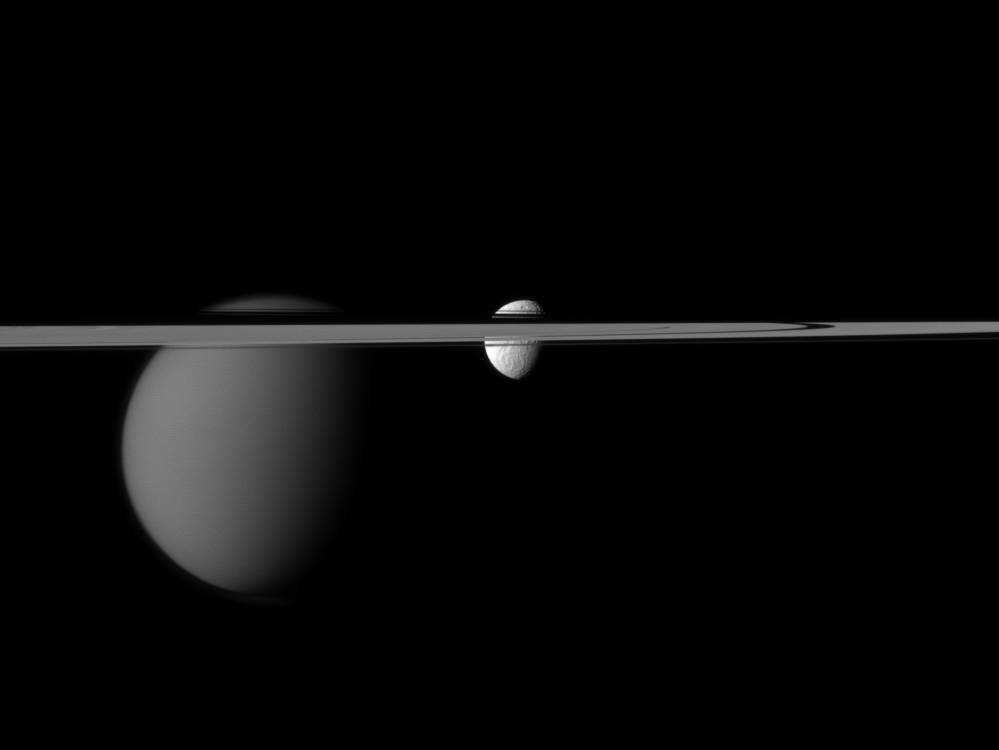
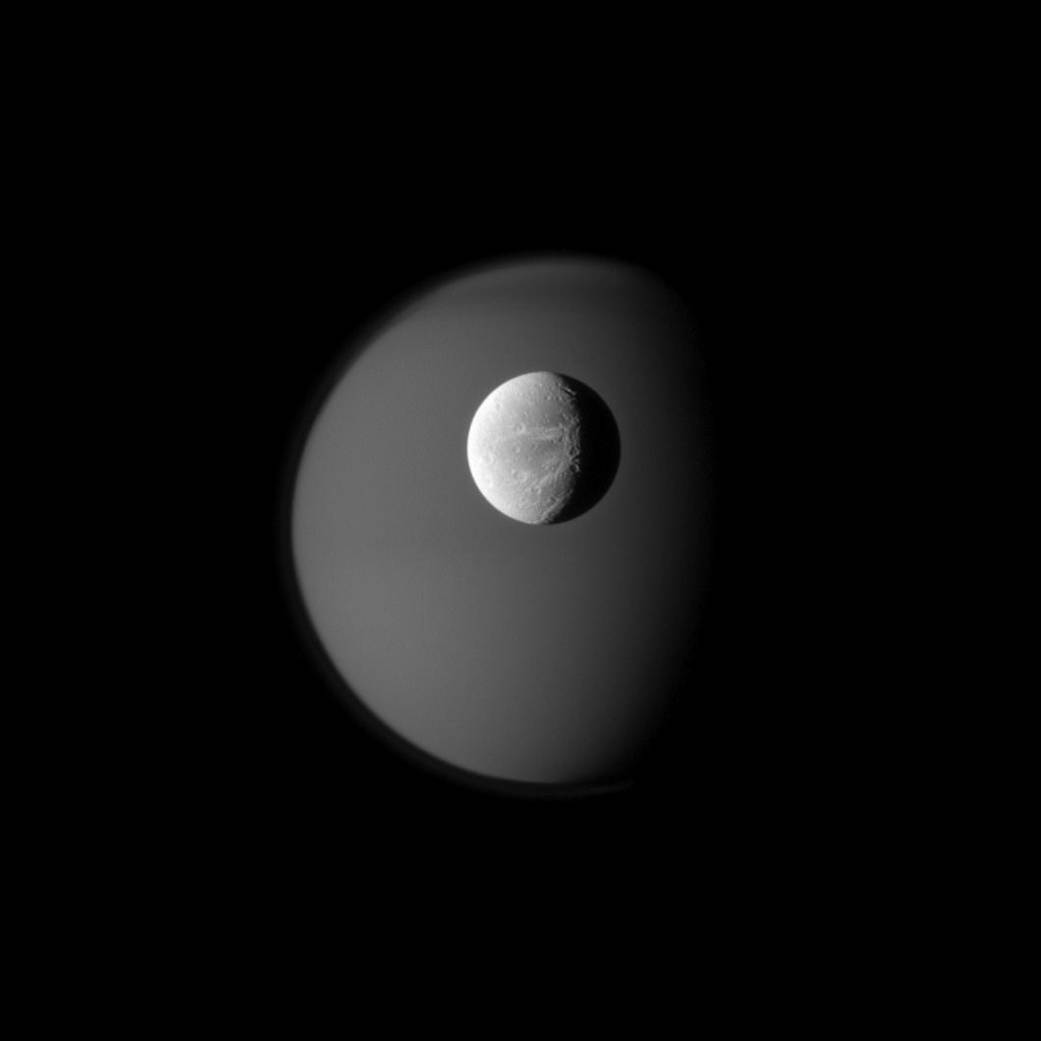
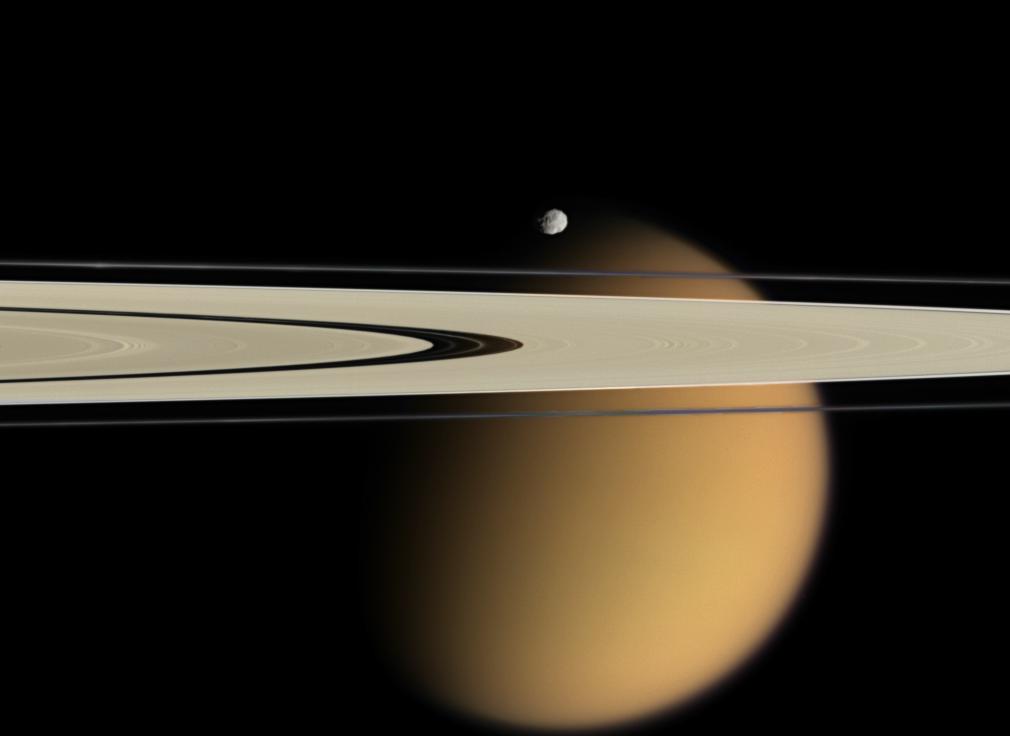
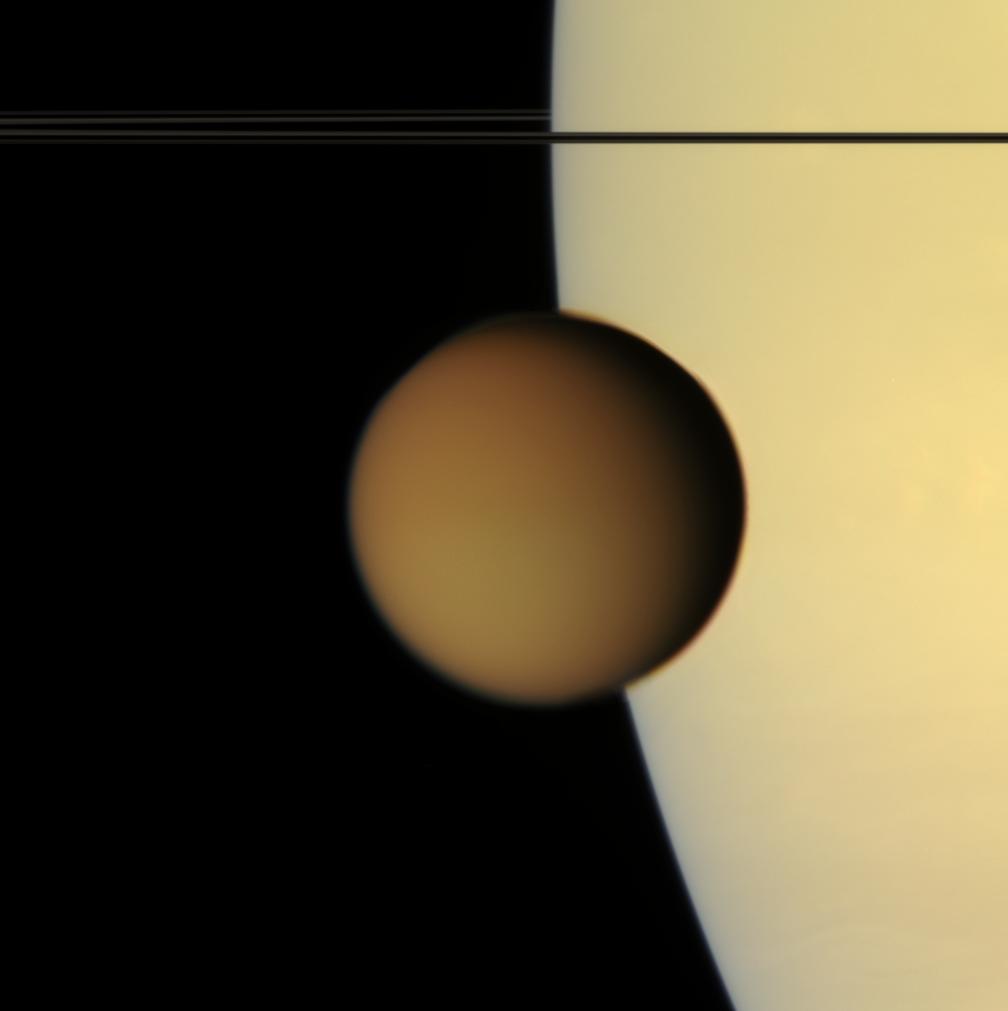
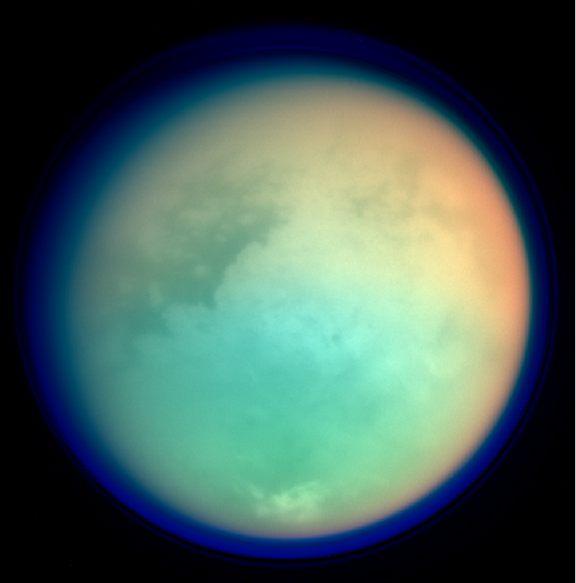
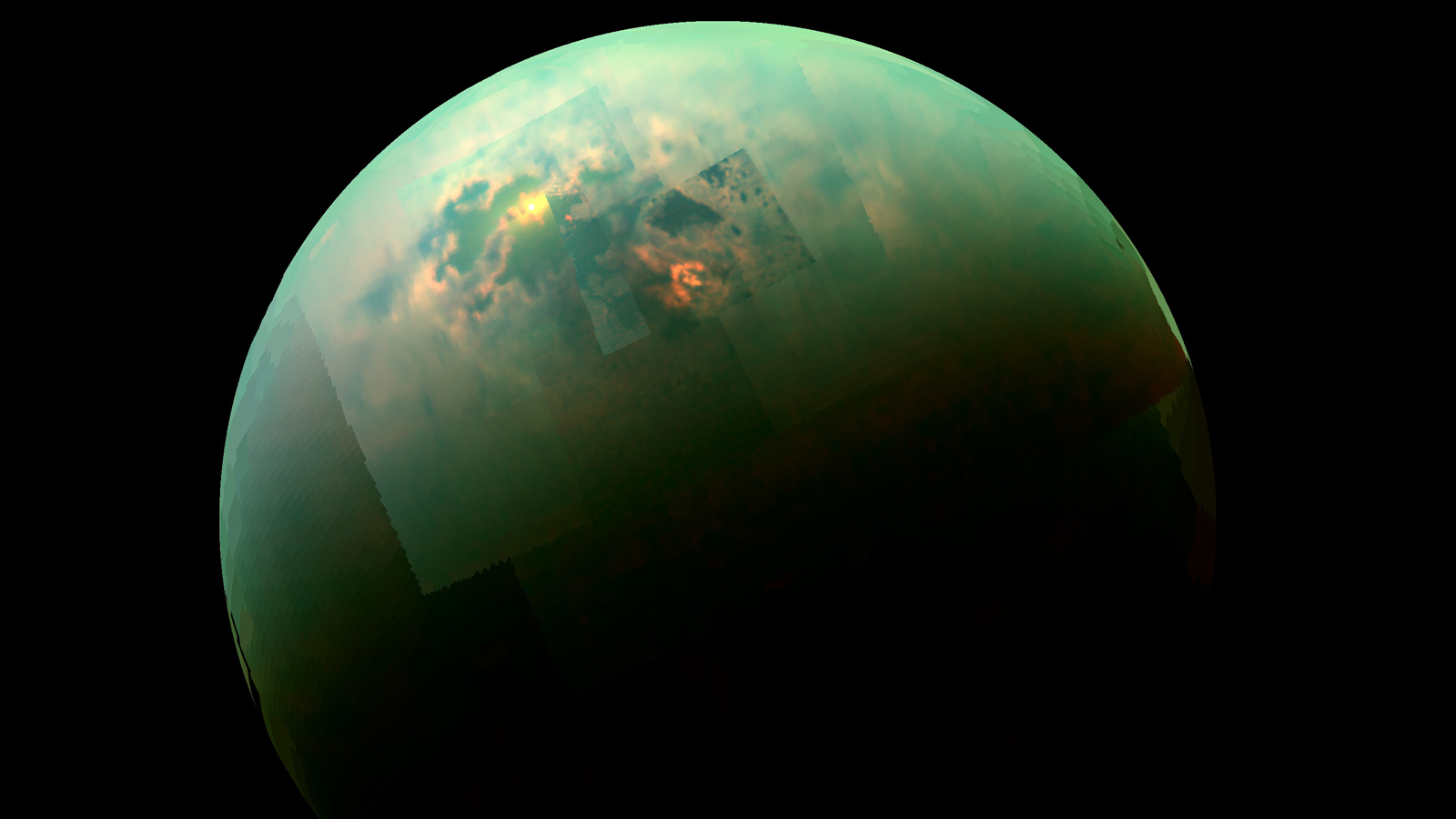
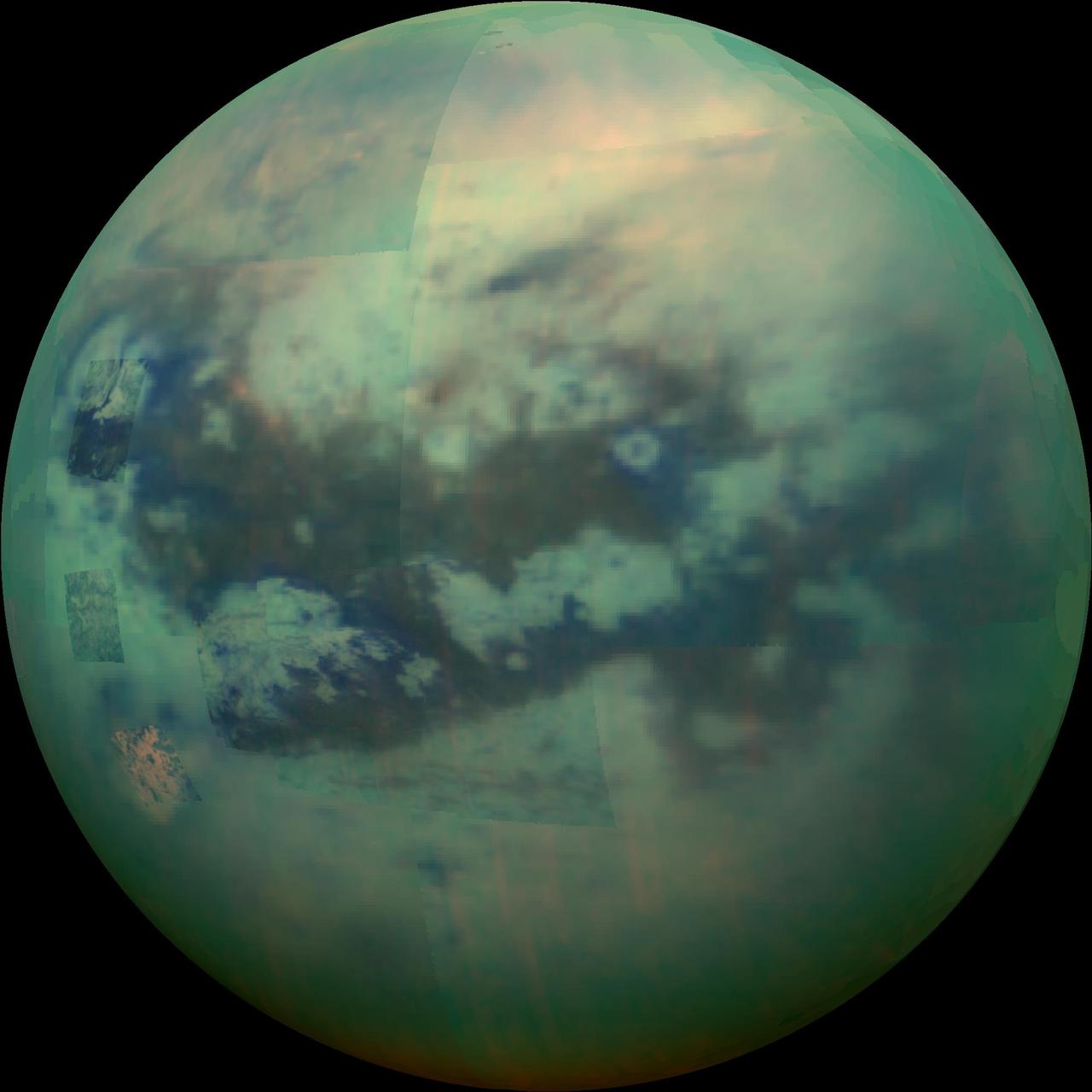
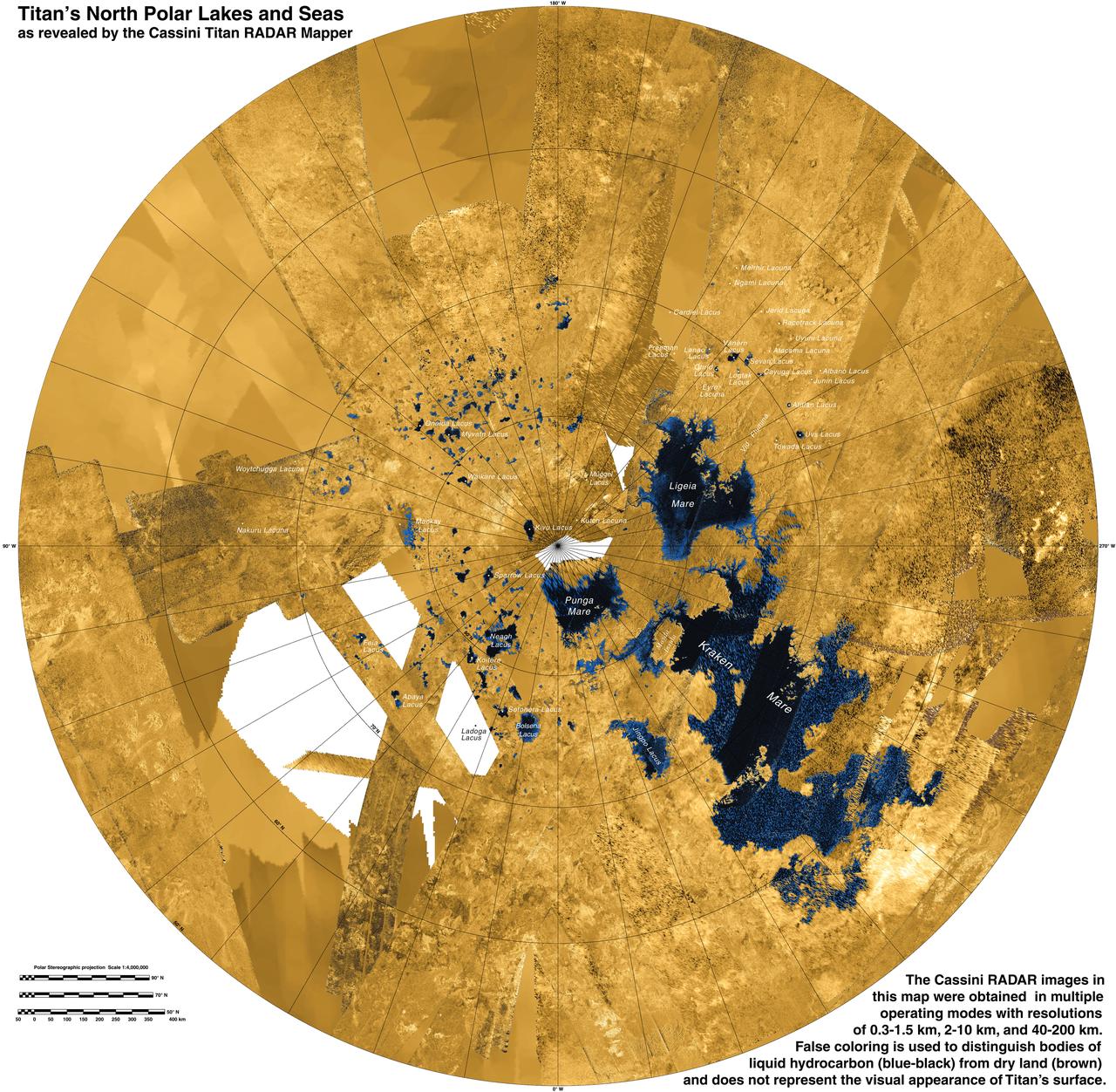
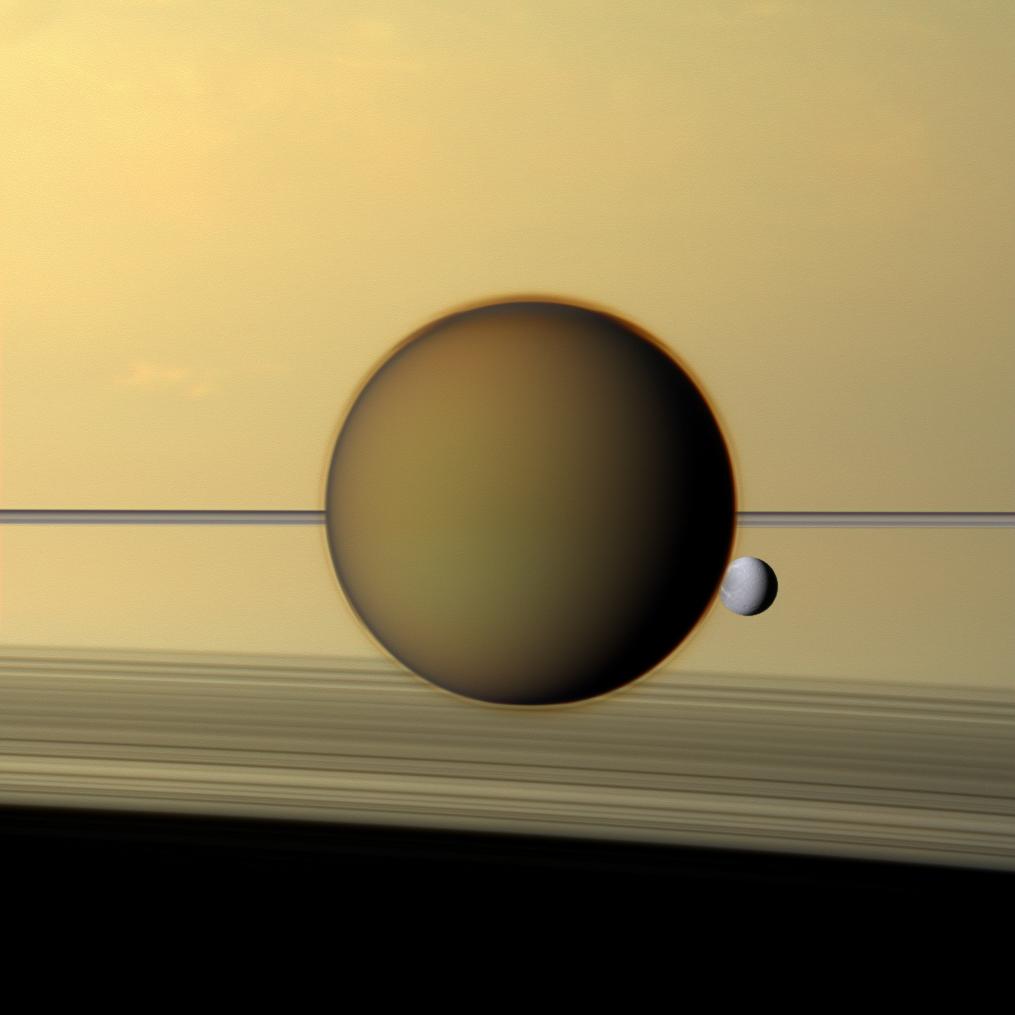
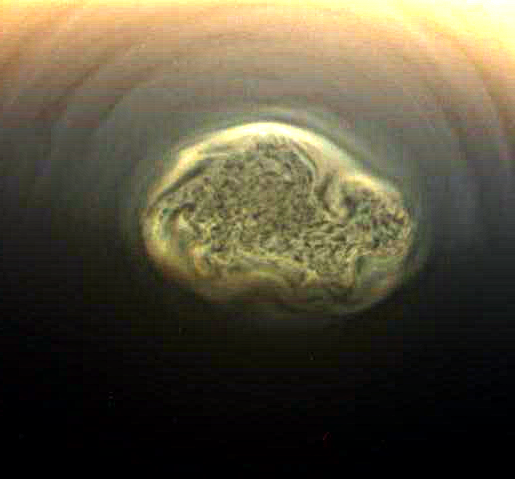
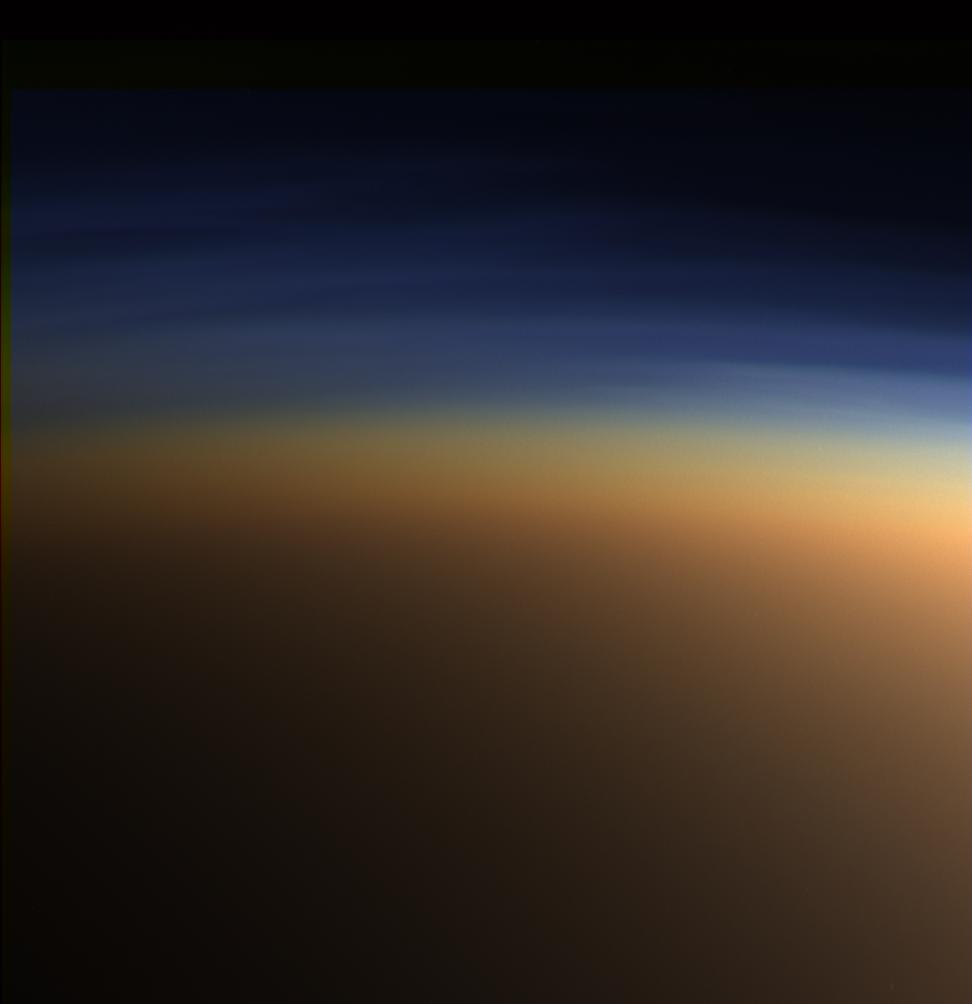
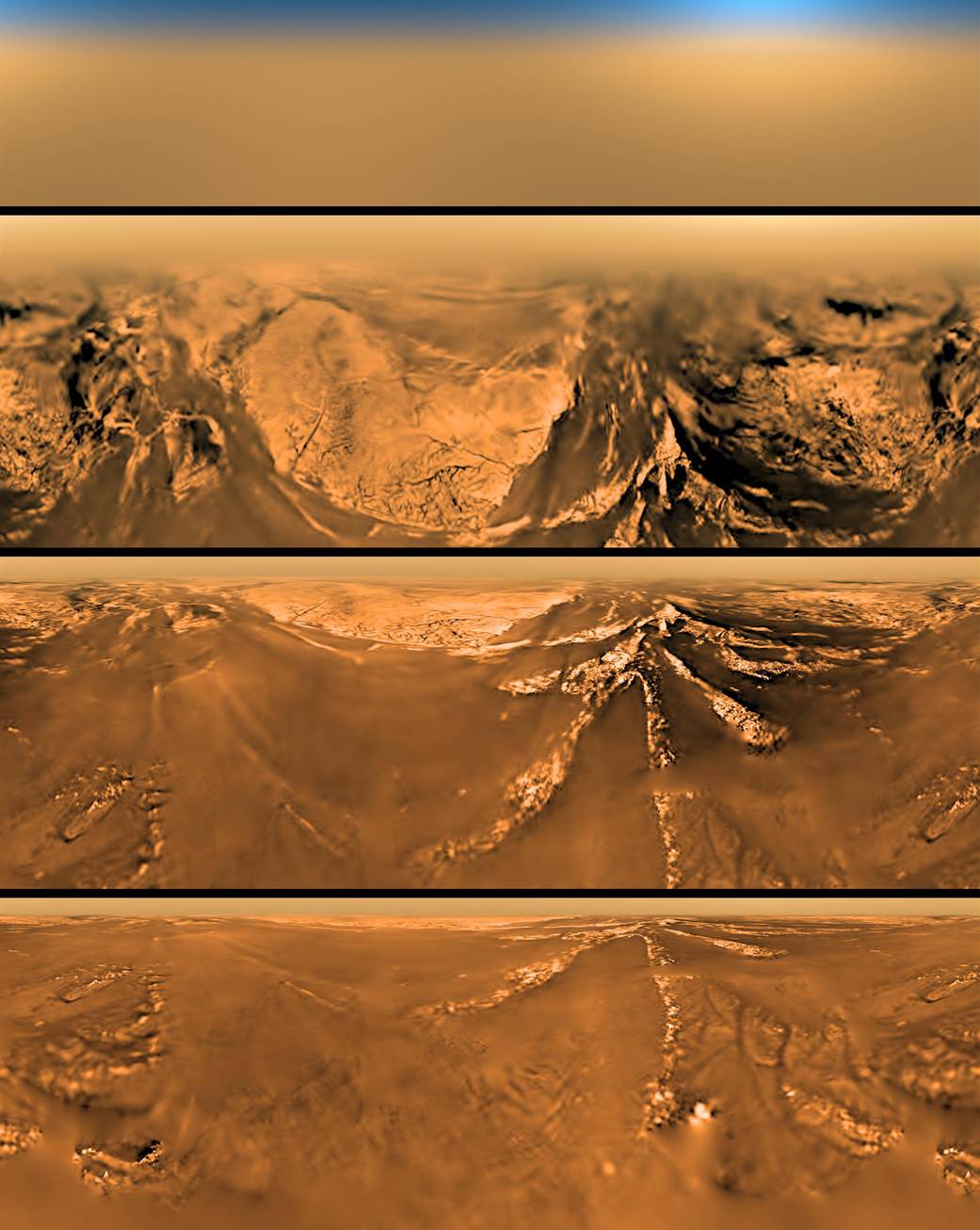
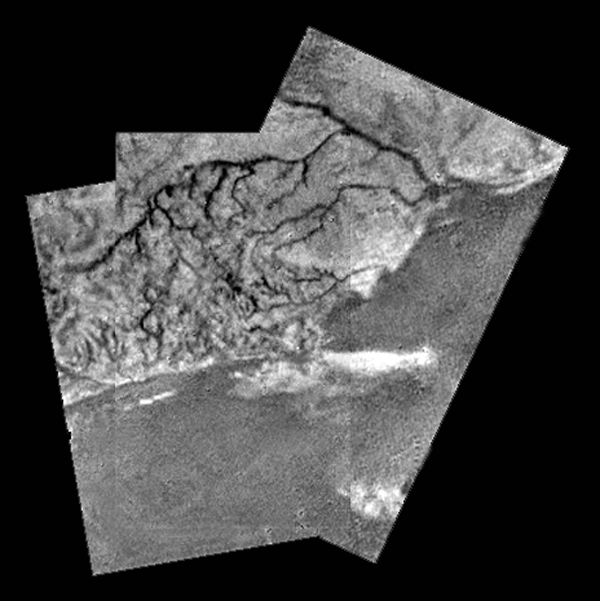
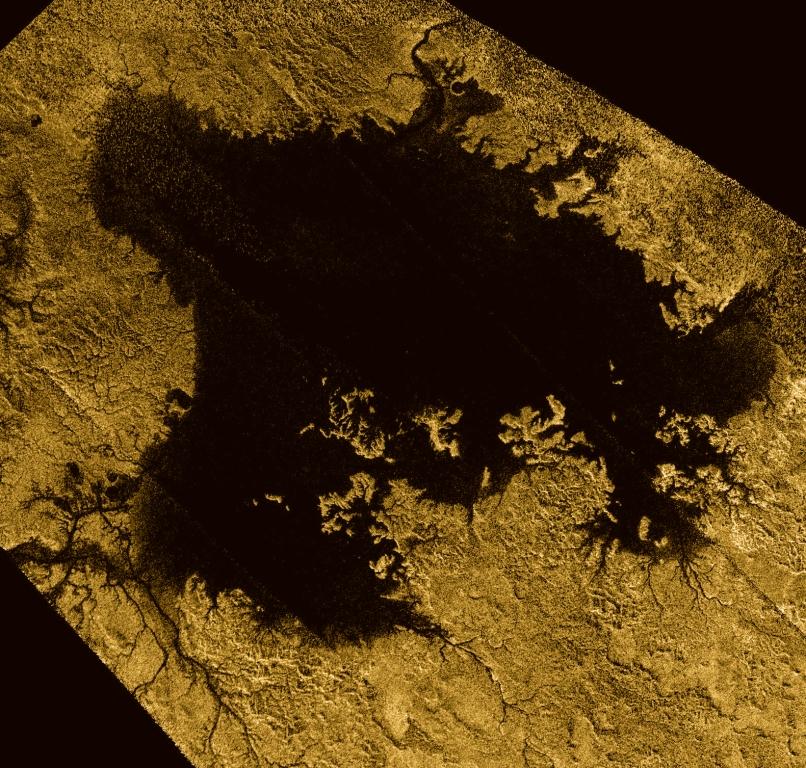
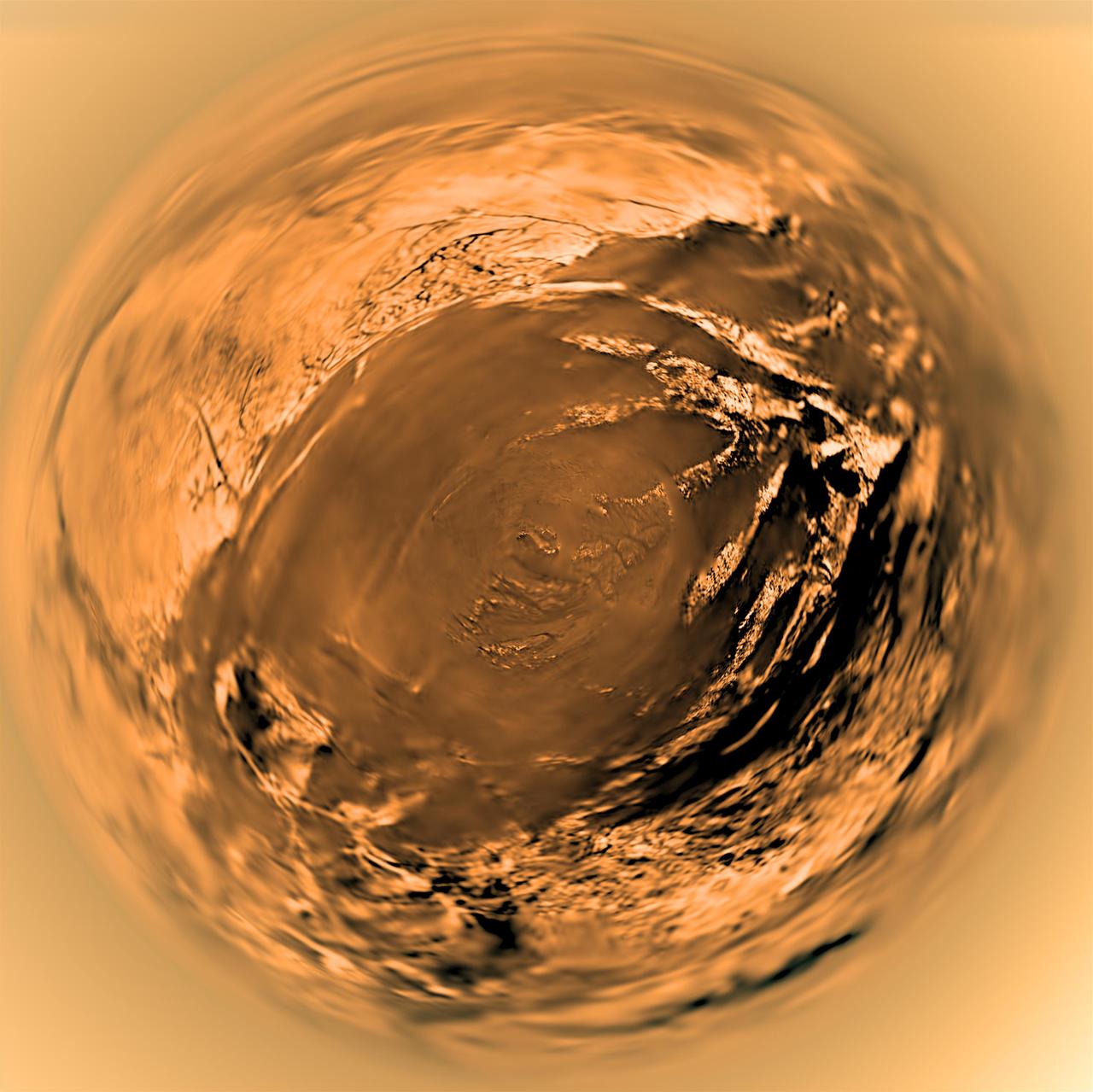
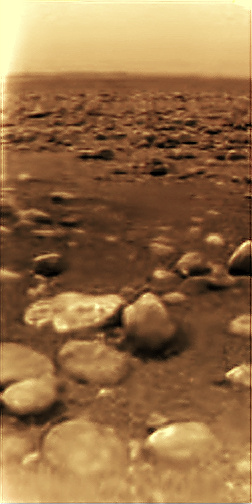
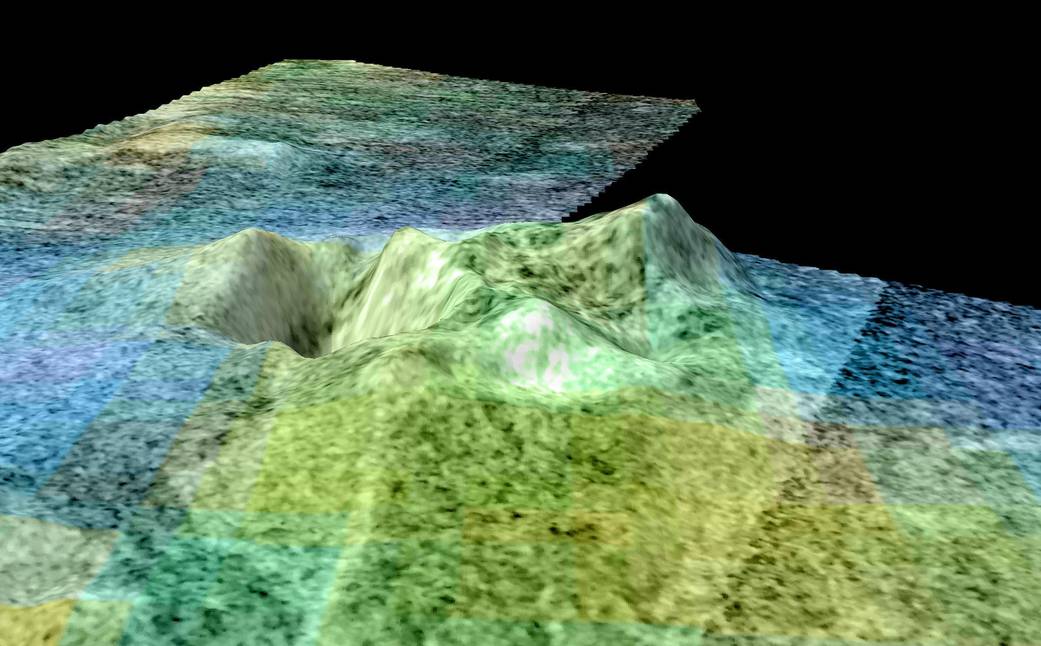
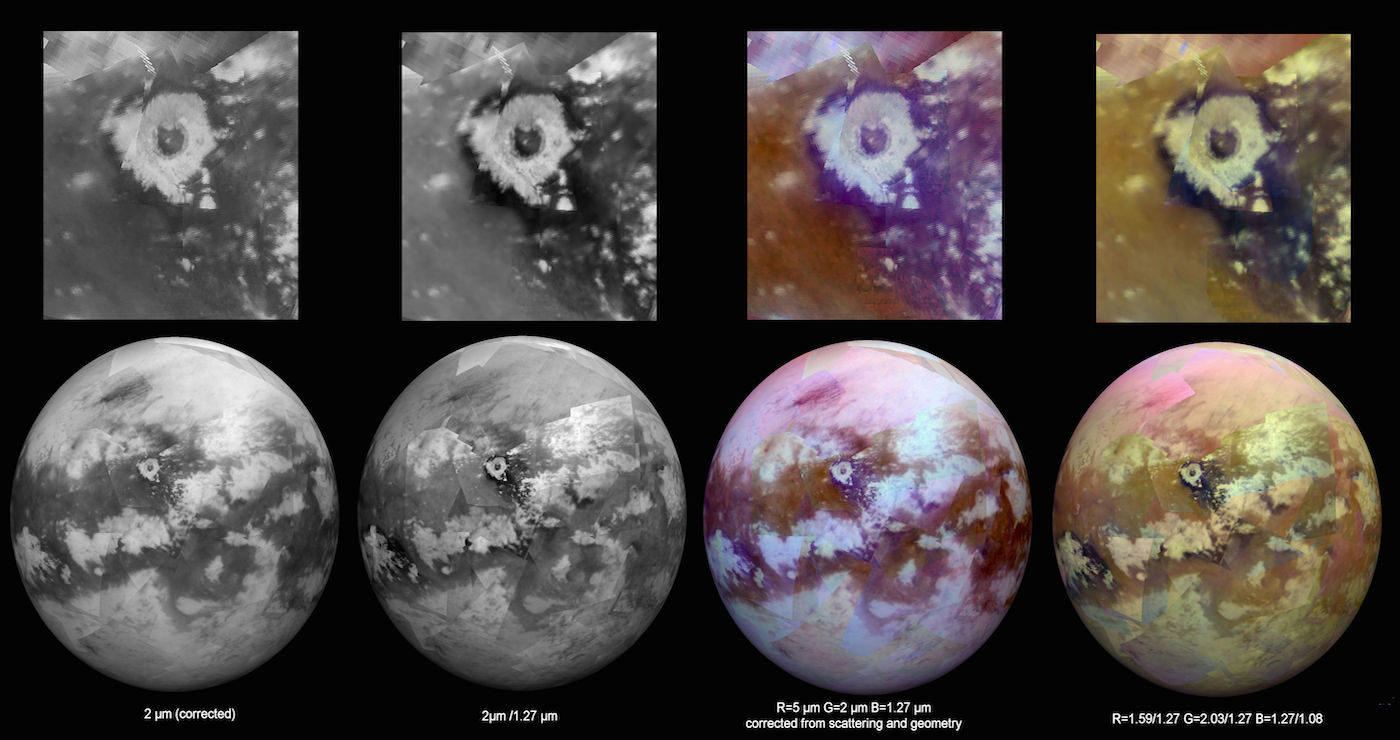
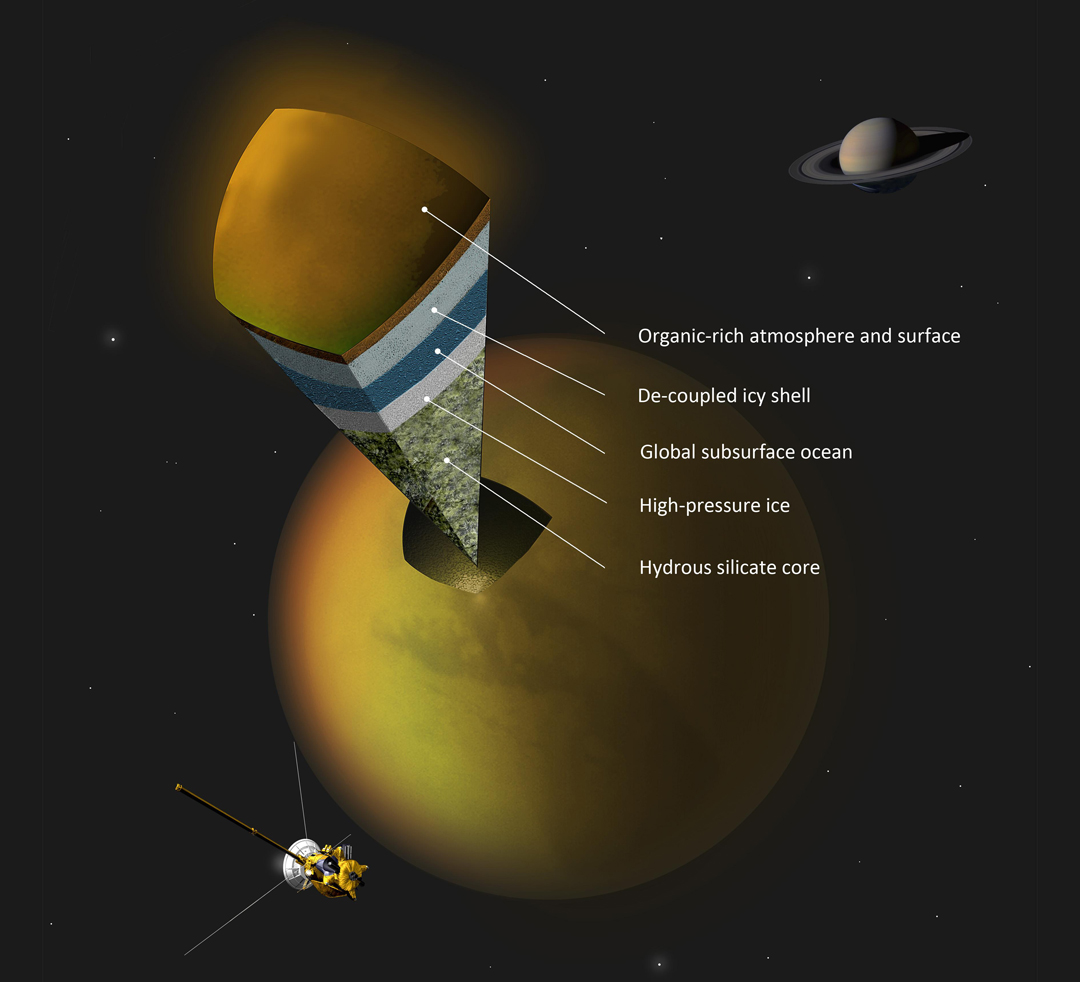
Titan, Moon and Earth
Solar Blast
Titan's Orbit
Masses of Saturnian moons
Distant Titan
Hazy Titan
Titan Beyond the Rings
Titan Transit
Kaleidoscope Of Colour
Polar Lakes
Titan's Surface
Hydrocarbon Lakes
Dione Through The Haze
Eternal Hurricane
Titan's Haze
Descent To Titan
Titan River Channels
Ligeia Mare
Titan's Surface
River Bed Gravel
Potential Cryovolcano
Sinlap Impact Crater
Ice Shell And Ocean



























